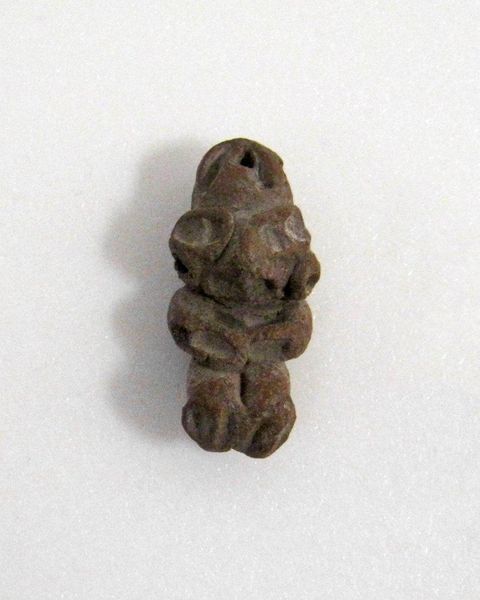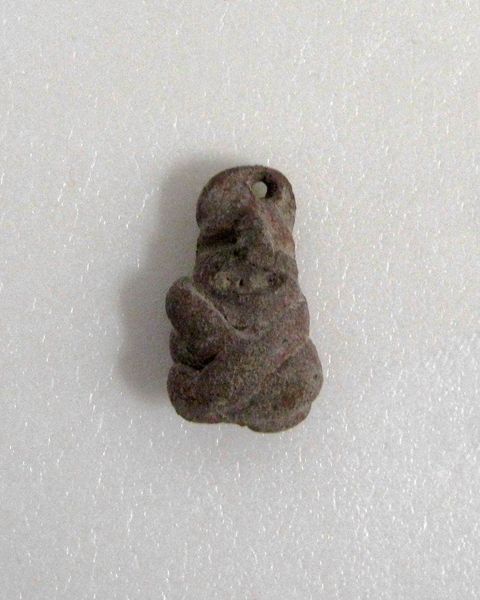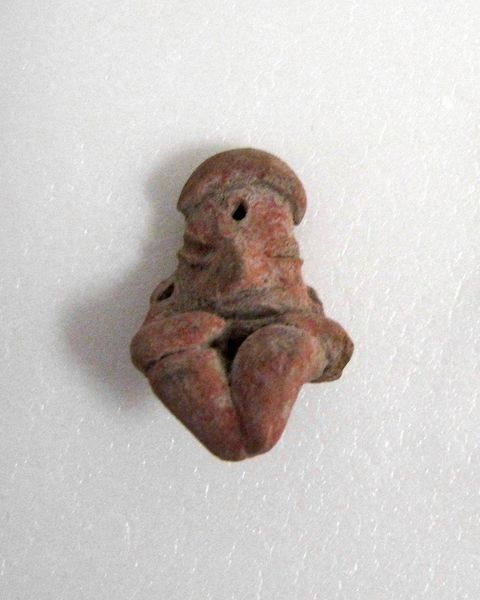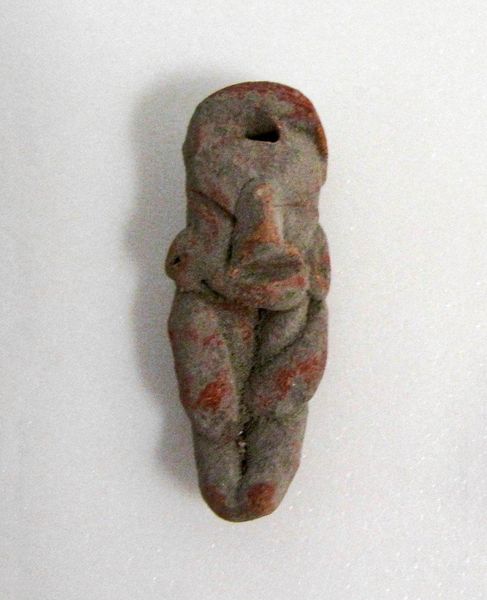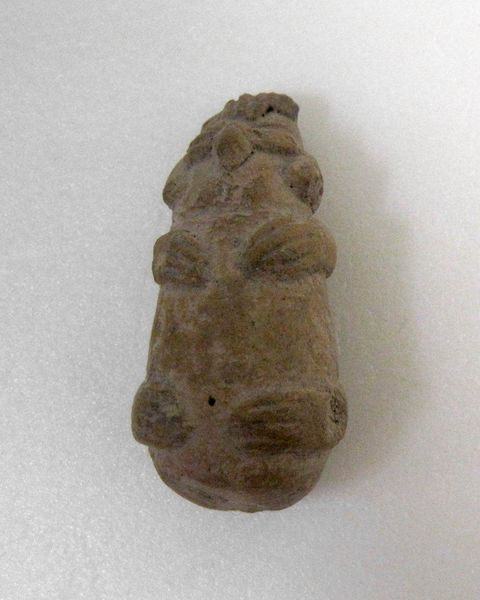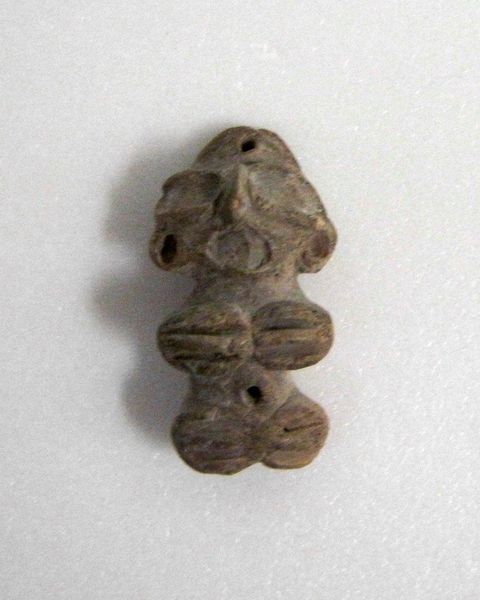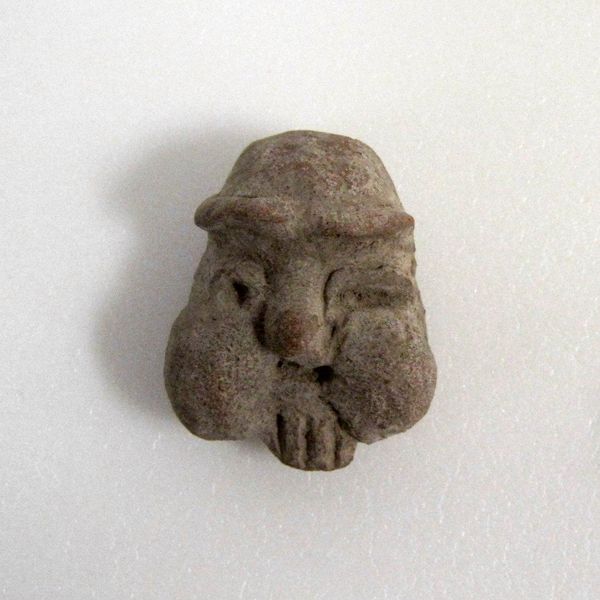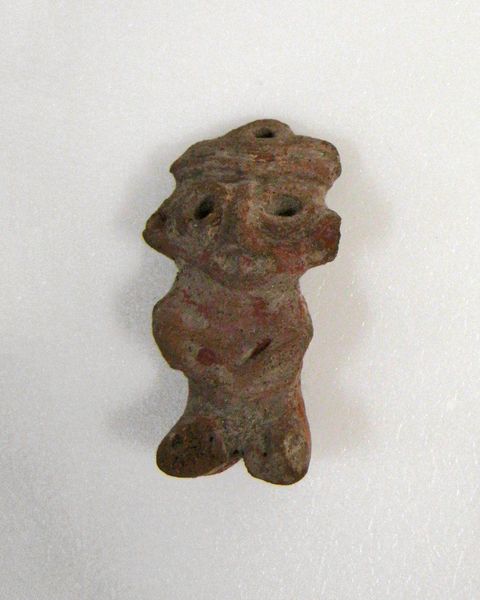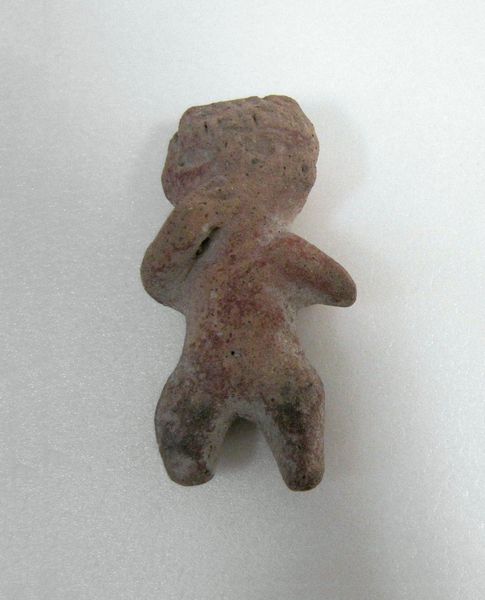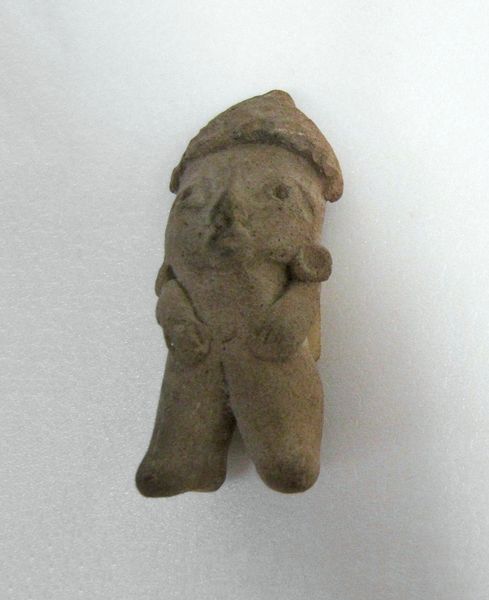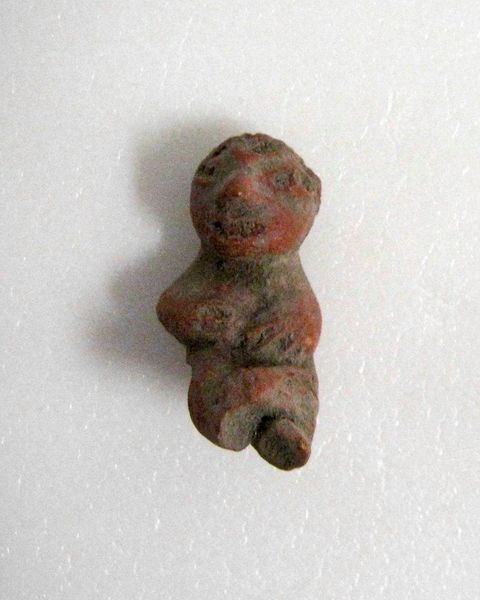
ceramic, earthenware, sculpture
#
sculpture
#
ceramic
#
figuration
#
earthenware
#
sculpture
#
indigenous-americas
Copyright: Public Domain
Curator: Look at this diminutive treasure, dating back to around 1500. It's a Tlatilco miniature figurine currently residing here at the Minneapolis Institute of Art. Editor: The figurine's hunched pose, almost fetal, feels incredibly vulnerable and strangely contemporary, despite its age. What material is it? Curator: It’s crafted from earthenware, giving it that characteristic earthy hue. The Tlatilco people, known for their ceramic work, clearly poured immense detail into something so small. This brings up how these sculptures circulated in these communities and what role that might play. Editor: The figurine's size forces intimacy. One is naturally drawn to examine every groove, indentation, and subtle curve. How might gender and identity intersect in its design? Look how her arms seem bound across her belly. Curator: The exaggerated hips and thighs are undeniably suggestive of fertility. Tlatilco society appears to have placed significance on such depictions; figurines like these were often included in burial sites, hinting at their use in rituals surrounding life and death, potentially relating to ideals surrounding agriculture and female power. It seems that female symbolism might have had different connotations that the colonizers assigned to this land. Editor: The little holes—almost like crude piercings—in her face create an additional layer of intriguing strangeness and potentially signaling beauty. Their intentional placement on a female figurine surely challenges norms about beauty standards in an indigenous-americas artwork. Curator: It really makes you consider the complexities of Mesoamerican life during this prehistoric period. What narrative does this society want to build? Why include these with the deceased? What function did she serve during the person’s life or in the afterlife? These works invite important discussions about culture, identity, and place in historical narratives. Editor: These artworks certainly show me I should spend more time considering art pieces in the archeological wing of galleries. It certainly feels humbling to look on such intimacy. Curator: Absolutely, especially when reflecting on how museums exhibit them today. It offers insights into diverse, but lost histories, and how museums present and frame such cultural remnants.
Comments
No comments
Be the first to comment and join the conversation on the ultimate creative platform.
